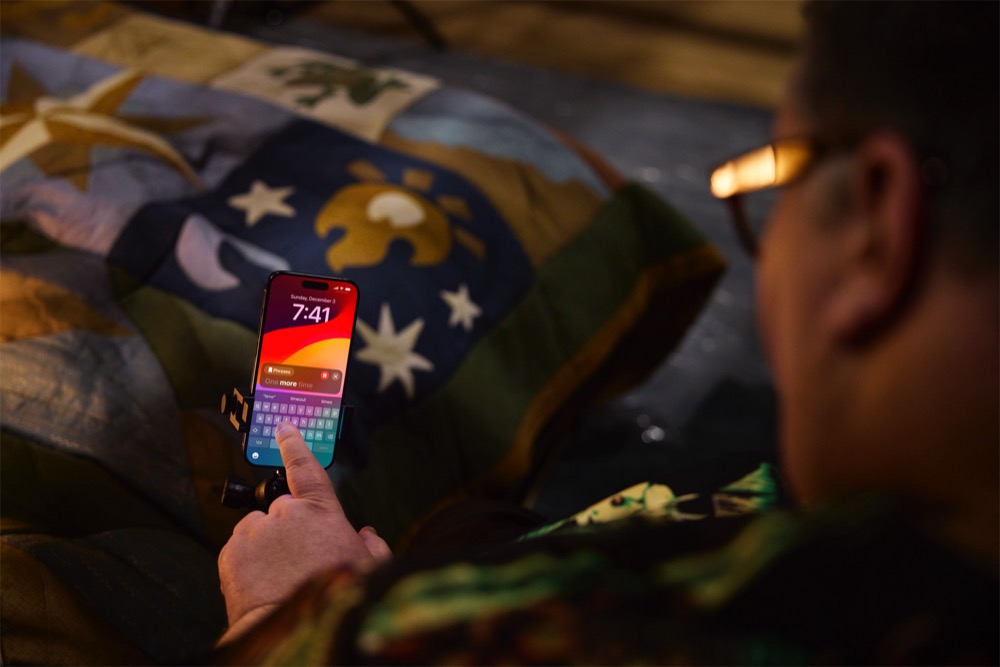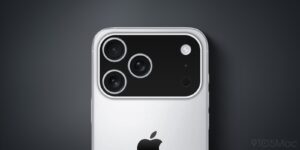Why Personal Voice in iOS 17 can change lives

What if you could no longer read your kids a bedtime story? What if you could no longer find your voice? Apple now has tools to help with that, freely available across its devices and operating systems.
Accessibility is for everyone
Historically, Apple’s commitment to accessibility is strong. While it is true that disability advocates will always lobby for even stronger solutions that ensure people of disability can enjoy more equal lives, the company has delivered accessibility tools since day one. That’s good for everyone, of course, as we all benefit from interacting with everyone, rather than just small groups.
The International Day of Persons with Disabilities takes place December 3, and in its latest video, Apple is promoting Personal Voice and Live Speech, two tools that mean those who lose their voice can continue to express themselves with help from technology. The tools were originally announced around Global Accessibility Awareness Day in the prelude to WWDC 2023.
Before you ignore these tools because you can speak, try to think a little more widely. While some are born unable to speak, others may become so through apraxia, stroke, trauma, or through developing degenerative conditions such as ALS.
Many Covid sufferers report lengthy throat infections that made it impossible to speak, and there are a raft of unpleasant conditions that can take a person’s voice away, temporarily, or forever.
Apple’s lovely story about searching for a voice
Apple’s latest film about accessibility features disability advocate Tristram Ingham. The film tells of a young girl and her pink, floppy-eared furry friend searching for his missing voice.
The touching story is narrated by Ingham using Personal Voice.
He used this to create a virtual version of his voice as he suffers from a condition that will deny him his own. That’s because Ingham has facioscapulohumeral muscular dystrophy (FSHD), which causes progressive muscle degeneration starting in the face, shoulders, and arms, and can ultimately lead to the inability to speak, feed oneself, or in some cases, blink the eyes. In 2013, he began using a wheelchair, and in recent years he has noticed changes in his voice.
“Disability communities are very mindful of proxy voices speaking on our behalf,” Ingham says. “Historically, providers have spoken for disabled people, family have spoken for disabled people. If technology can allow a voice to be preserved and maintained, that’s autonomy, that’s self-determination,” he said.
Apple’s two features work together so someone losing their voice can type what they want to say and have the system speak in their own voice during face-to-face conversation, on a telephone call, or when participating in a FaceTime chat.
You can download the story from Apple Books.
Empowerment matters for everyone
Of course, for business, accessibility tools such as these open up two critical doorways toward improved corporate social responsibility.
One door is customer-focused, as the more empowered people of disability are to communicate on equal terms with your company the more potential your business has to building strong customer relationships and identifying new customer needs. It stands to reason that tools that enable communication are essential to good customer relationships.
But the second door is perhaps even more important, in that the more empowered people become, the more capable they also become of filling roles within your company.
Doing so lends a double benefit – you may unlock reserves of talent while also fostering strong customer relations. After all, just as the move to adopt hybrid working practises has enabled many people from various marginalized groups to become employed, tools such as these further open up life chances for people who may otherwise lack them.
Doing the right thing is good for business
That’s great in terms of feeling good about things, but it’s really, really good for any enterprise hoping to build more diverse workforces. Particularly if in doing so they also seek to deepen their understanding of potential customers they don’t yet feel they adequately serve.
And that’s perhaps the most profound thing about accessibility technologies in a more general sense.
By removing barriers to communication, understanding, and participation business can help build better understanding and optimized relationships between people who may have found it difficult or impossible to reach each other before.
Apple CEO, Tim Cook sees it this way: “Apple is founded on giving people power to create things, to do things they couldn’t do without those tools. We’ve always viewed accessibility as a human right, and just like human rights are for everyone, we want our products to be accessible to everyone.”
Apple’s long time done decision to put accessibility tools inside all its products for no charge is good for everyone, of course. They give Apple foundations from which it can continue to build new operating system paradigms, as particularly visible in things like Double Tap on Apple Watch and soon, in the gesture and eye/pointing controls we’ll use to navigate the experience within the Vision Pro range.
Please follow me on Mastodon, or join me in the AppleHolic’s bar & grill and Apple Discussions groups on MeWe.
Please visit and bookmark Apple Must for more reports like Why Personal Voice in iOS 17 can change lives



